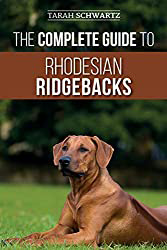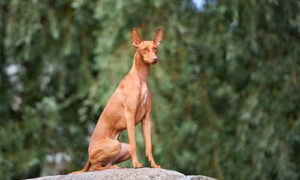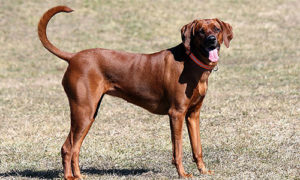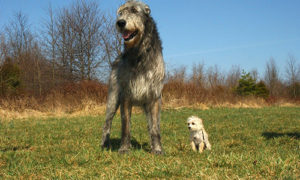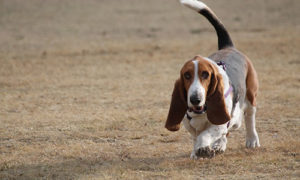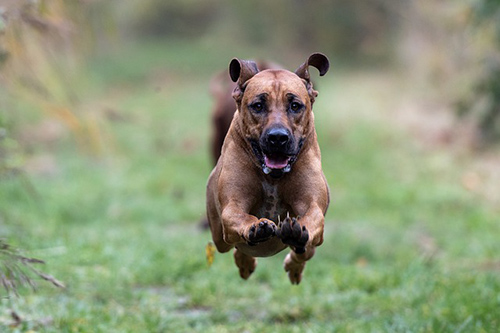
Like most dogs, the Rhodesian Ridgeback has quite a history to tell. During the 16th and 17th centuries, European settlers began to arrive in South Africa and brought dogs such as the Mastiff, Great Dane, Bloodhound, Pointer, Staghound, and Greyhound name a few.
These settlers would need a dog that could put up with hot and cold weather, a little water, and rough bush, all while performing the duties of a guard dog and hunting dog. They bred their European dogs with native Hottentot tribal hunting dogs (which settlers recognized by a ridge of hair growing in the opposite direction along the top of their back) in time; they developed just such a dog.
European Settlers Used Them to Hunt Lions
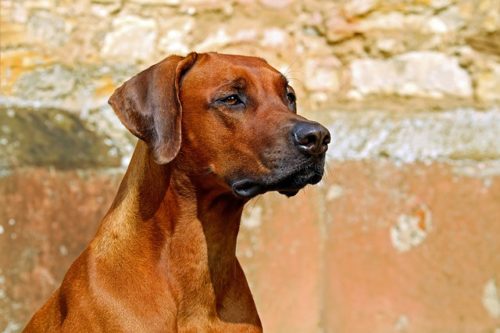
The Rhodesian Ridgeback hunts by both sight and scent and is a devoted protector of the entire family. Hunters took several of these dogs to Rhodesia in the 1870s to hunt lions, track them, and then keep them at bay. Amazingly, these dogs were so successful; they became popular. Also, their distinguishing ridge became a symbol of quality.
By the early to mid-1900s, too many types of ridged dogs existed. Therefore, breed enthusiasts convened a meeting to clarify the most looked-for points of the breed. This meeting set the basis of the current standard we have today.
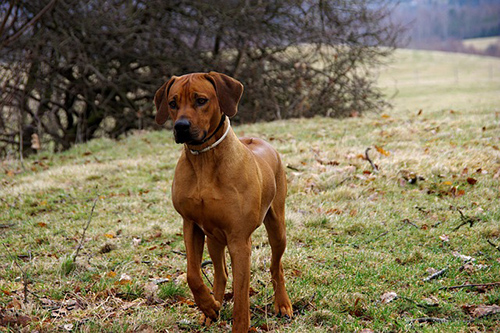
Rhodesian Ridgebacks made their way to England in the 1930s and then to America not long after. In both countries, the dogs gained recognition in the 1950s, and expeditiously gained a large fan base. During the 1980s, the breed garnered recognition as a sighthound and became eligible to compete in sighthound field trials.
Today, the Rhodesian Ridgeback is one of the more popular hounds. Many believe this is because it combines the abilities of the hunter, protector, and companion in a sleek athletic body.
Rhodesian Ridgeback Breed Facts
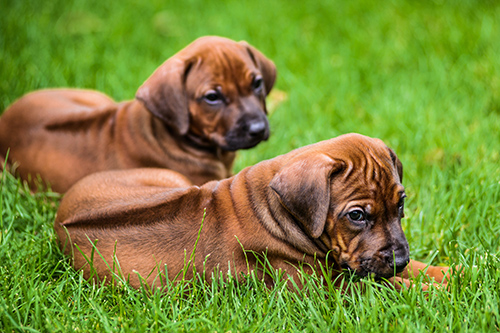
Temperament: Many consider the Rhodesian Ridgeback to be the hound group’s answer to a protective dog. In fact, it is both a skilled hunter and a loyal guardian. It is good for children and rather protective of the entire family. However, it can be a little too animated for small children. These dogs are strong-willed and powerful. In fact, some can be domineering. They’re also reserved with strangers. They’re OK around other dogs. However, males may jostle for dominance. Ridgebacks are great with cats if they’re raised together.
Upkeep: The Rhodesian Ridgeback loves to run. For instance, it needs to be mentally and physically stimulated to keep it from getting bored. They’re excellent jogging and hiking partners. Coat care is not excessive, consisting only of occasional brushing to remove dead hair.
- Popularity: Popular
- Family: Sighthound, Scenthound
- Origin: South Africa
- Date Developed: 1800s
- Past Function: Hunting large game, guard dog
- Current Function: Lure coursing, companion
- Other Names: African Lion Hound
- Life Expectancy: 10–12 years
- Weight: Male: 85 pounds; Female: 70 pounds
- Height: Male: 22–27 pounds; Female: 24–26 pounds
- Color: Light wheaten to red wheaten; nose can be black, brown, or liver
- Group: The Hound Group
Health Problems: CHD, hypothyroidism, elbow dysplasia, deafness, dermoid sinus
Characteristics
The Rhodesian Ridgeback is slightly longer than it is tall. It is a breed that combines features of speed, power, and endurance. According to the breed standard, it must possess an athletic build, enabling it to bring down wounded game. Also, the dog’s physique enables it to do extremely well in performance events. Its stride is efficient and long. Also, they do very well in hot climates thanks to their glossy coats. A distinguishing feature is a defined ridge, which should start with two matching swirls just behind the shoulders and taper to the hips’ eminence.
Hunting and Guardian Duties
One of the primary historical roles of the Rhodesian Ridgeback was that of a skilled and courageous hunter. Indigenous tribes, such as the Khoikhoi and later the Matabele and Zulu, valued these dogs’ ability to track and hold large game, such as lions and leopards. The Rhodesian Ridgeback’s versatility in hunting made it an invaluable asset to these communities, contributing significantly to their survival.
European settlers recognized the breed’s exceptional traits and began incorporating it into their hunting practices.
The Rhodesian Ridgeback’s prowess in tracking, agility, and fearlessness earned it a reputation as a reliable hunting companion capable of taking on formidable adversaries. Guarding homesteads and settlements was another vital role for Rhodesian Ridgebacks. Their loyalty, intelligence, and protective instincts made them formidable guardians, ensuring the safety of families and livestock in the challenging African landscape.
The Breed’s Influence in Modern Times
As time progressed, Rhodesian Ridgebacks found their way beyond the borders of Africa, captivating the hearts of dog enthusiasts worldwide. Recognized by prominent kennel clubs, including the American Kennel Club (AKC) and the Kennel Club in the United Kingdom, the breed has gained popularity as a family pet and a show dog.
While many Ridgebacks have transitioned into beloved household pets, their working heritage remains integral to their identity. Owners often engage them in obedience trials, agility courses, and tracking competitions, allowing them to showcase their intelligence, athleticism, and instincts.

